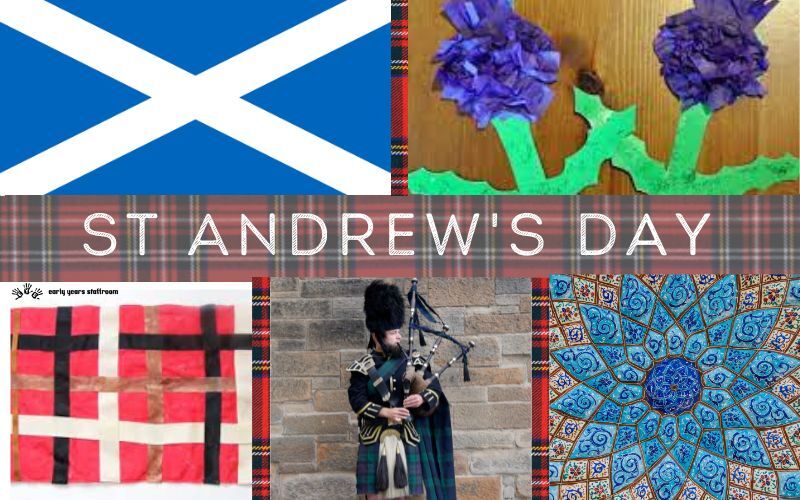

St. Andrew’s Day is a national day in Scotland, celebrated on November 30th, honoring St. Andrew, the patron saint of Scotland. In an early years setting, educators can introduce children to St. Andrew’s Day and its significance in a fun, age-appropriate, and inclusive manner.
Here are some ideas for celebrating St. Andrew’s Day in an early years education setting:
Scottish Music and Dance: Introduce children to traditional Scottish music and dances, such as bagpipe tunes or the Highland Fling. Play recordings of songs or invite a guest speaker to demonstrate traditional dances. Encourage children to participate and learn some simple dance steps.
Circle Time Discussion: Talk about the geography, culture, and history of Scotland, using maps, images, or videos to give children a visual representation of the country and its traditions. Discuss famous landmarks, such as Edinburgh Castle, Loch Ness, or the Isle of Skye.
Art and Craft: Organize art and craft activities related to St. Andrew’s Day or Scottish culture, such as making paper saltire flags, creating clay Nessie (Loch Ness Monster) figures, or designing St. Andrew’s Day greeting cards.
Scottish Food Tasting: Prepare or bring in traditional Scottish snacks for the children to taste, such as shortbread or oatcakes. Make sure to consider any dietary restrictions or allergies among the children. Discuss the ingredients used in these dishes and the importance of food in cultural celebrations.
Scottish Symbols and Tartan: Teach children about Scottish symbols, such as the thistle, the saltire (St. Andrew’s Cross), and tartan patterns. Organize art and craft activities related to these symbols, such as creating paper thistles or designing their own tartan patterns.
By incorporating St. Andrew’s Day celebrations into your early years setting, you can introduce children to the history and culture of Scotland while promoting understanding and appreciation of diverse traditions.